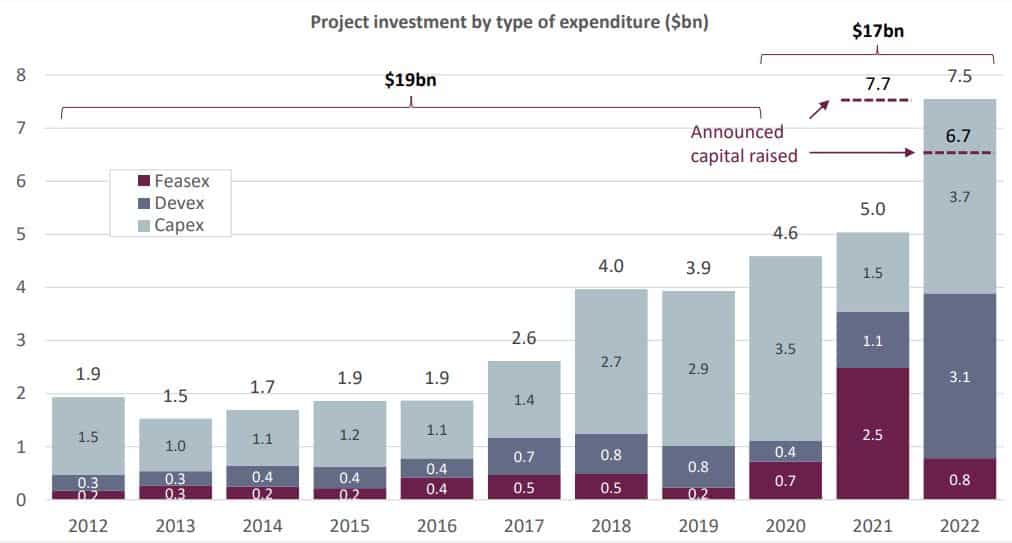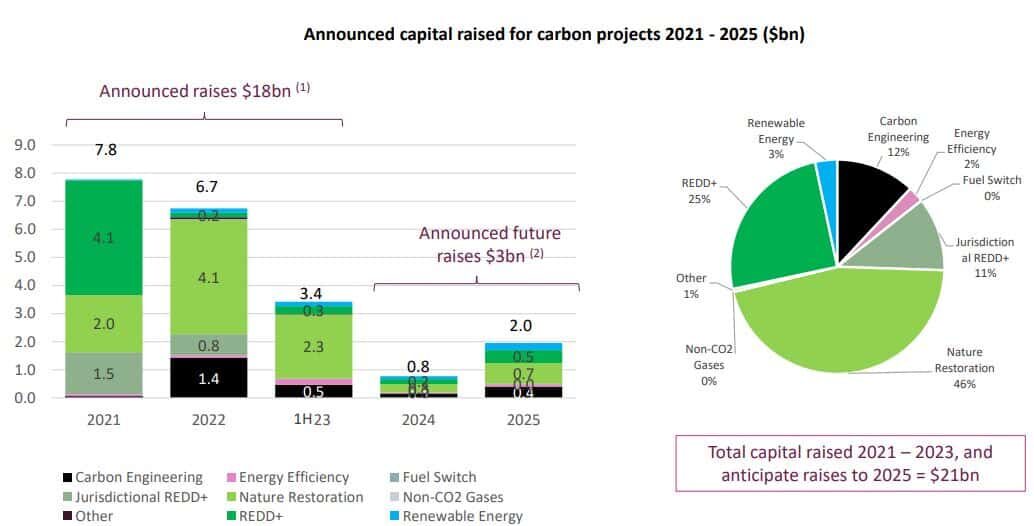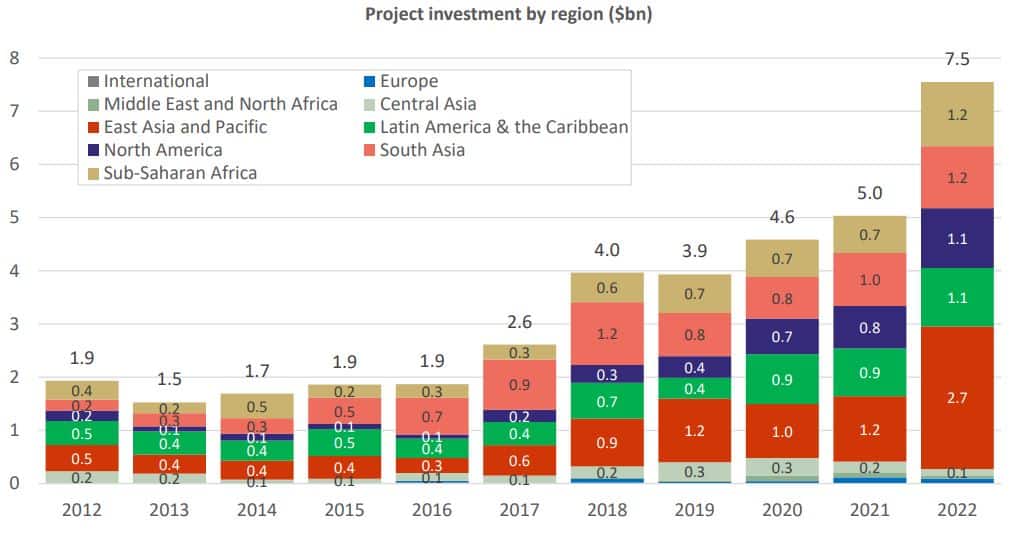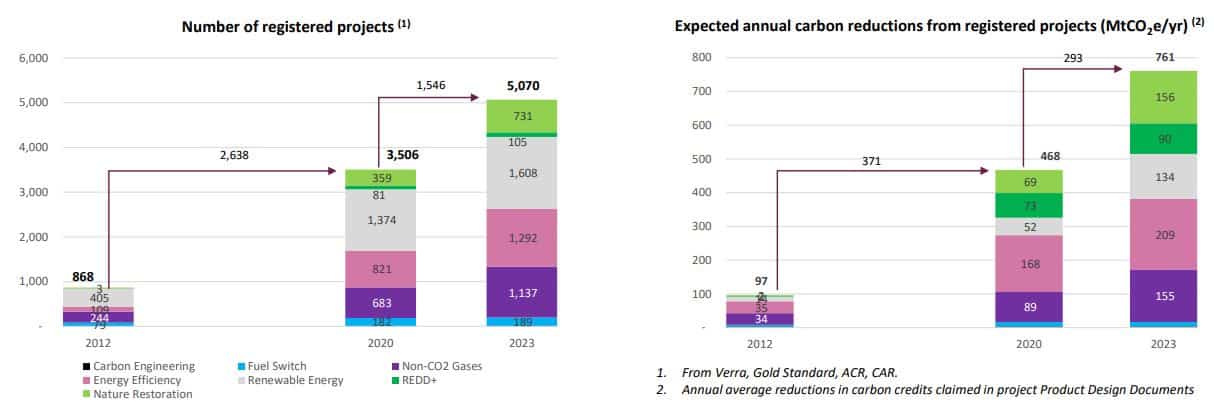A report by Trove Research revealed that there’s a total of $36 billion invested in carbon credit projects from 2012 to 2022, accelerating with more than $18 billion raised in the last 2.5 years. But global efforts are still short of $90 billion to meet the 2030 carbon reduction targets.
Investments in developing carbon credit projects are an important market signal indicating levels of corporate climate action.
However excessive criticism of quality may deter companies from engaging in their voluntary commitment to support carbon credits. This, in turn, may undermine critical voluntary climate actions from large companies.
The new commitment will deliver over a thousand new carbon projects, ranging from forest protection to carbon capture and storage solutions. It will also provide a growing supply of carbon credits that companies can use for their net zero strategies.
Trove Research is a leader in delivering data and intelligence on voluntary carbon market (VCM) and corporate climate pledges.
Carbon Credit Investments Reach $36 Billion
The report also analyzed capital invested in 7,000+ carbon credit projects from 2012 to 2022. Around $36 billion has been invested over this period, with $17 billion in 2021-2023 and $7.5 billion of this investment in 2022 alone.

The increase in investment is especially notable in the years from 2020 to 2022 as seen above. This has been fueled by the ballooning interest in using carbon credits by corporations to reach their climate targets. These corporations include the world’s largest companies.
The researchers also examined announced capital raises associated with the VCM since 2021. Results show that a total of $18 billion has been secured for carbon credit funds just for the last two and a half years.
The largest raise was in 2021 with $7.8 billion. And around $3 billion has been committed up to 2025.

But notably, there’s a growing share of capital for carbon engineering projects which include Direct Air Capture (DAC) and Bio-energy with CSS (BECCs).
DAC, in particular, has been getting attention both from the private sector and federal government. Billions of dollars have been invested and promised by the U.S. Department of Energy into DAC and other carbon capture innovations.
Bridging the $90B Funding Gap
By region, since 2020 North America maintained the top spot as the largest destination for carbon credit investment, accounting for up to 16%. In comparison, only 1% of global carbon credits funding went to Europe.

The analysis also showed that since 2020, over 1,500 new carbon credit projects have been developed and registered with the 5 leading carbon registries. It represents a 160% increase in registration rate compared to the 2012-2020 period.
Together, these new projects claim to reduce an additional 300 million tonnes of CO2 annually, or about the same as the UK’s annual emissions.

Developments in carbon credit investment are bullish. However, the current commitment is still not enough to satisfy the global 2030 emission reduction targets. In fact, it represents just a third of the total funding needed to realize enough carbon credits by the decade’s end.
The report said that another $90 billion in capital is necessary by 2030 to meet net zero goals. By 2050, that capital expenditure must grow to a whopping $1,600 billion, or $1.6 trillion, in carbon credit funding to reach the 1.5C scenario. That means a $60 billion annual investment in carbon credit projects.
Investments in carbon credit projects have surged but a significant gap remains to achieve 2030 climate targets. Urgent funding is required to bridge the $90 billion deficit and accelerate the transition to a net zero future.


